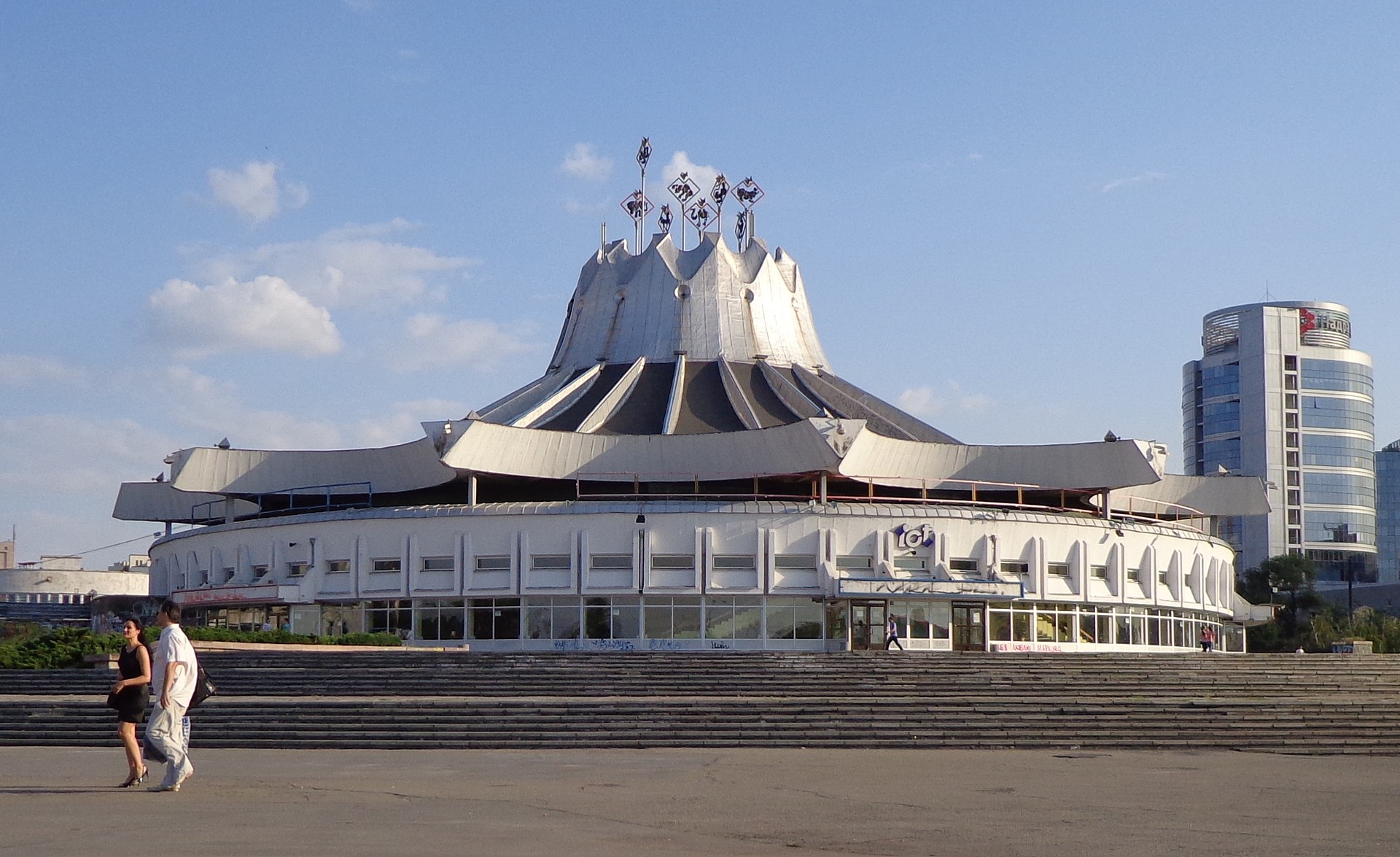Since 2010, on the third Saturday of April, fans of circus art, as well as representatives of this ancient artistic profession, have celebrated International Circus Day. This year it fell on April 19. It would seem to be an ordinary professional holiday, of which there are dozens in the annual calendar. However, for several generations of residents of Dnipropetrovsk (now Dnipro), starting from 1980, it was the building of the Dnipro Circus that became one of the most recognizable visual symbols of modern, but still Soviet Dnipropetrovsk. Interestingly, its architectural design was created by the outstanding Dnipro architect of Jewish origin, Pavlo Nirinberg (1936–2008), whose authorship includes several iconic objects for our city.
The realization of the talented artist's idea became the actual embodiment of a qualitatively new period in the life of the circus in our city. However, the circus tradition in Dnipropetrovsk dates to the previous 19th century, and its topographical location was not connected with the modern location of the building on Sicheslavska Naberezhna.
At the turn of the 1830s and 1840s, large-scale construction changes took place around the intersection of modern Dmytro Yavornytsky Avenue and Juliusz Slovackoy Street. On the square where the building of the Dnipro Academic Opera and Ballet Theater is now located, from the late 1790s, the Katerynoslav Provincial Prison was located, and the area around it was called Ostrozka Square. At the end of the 1830s, the outdated prison building no longer met the requirements of the time and was demolished, and a new prison was built a little further south.
Instead, the vacant lot that remained after the demolition of the old prison building was used to build primitive wooden attractions, accessible to representatives of absolutely all social strata. The change in the functional purpose of the area also led to a change in its name - the square was now called Hoydalkova.
It was the place that the then Katerynoslav provided for the placement of temporary tents of traveling circus troupes that toured the city. In 1885, at the invitation of the Jewish circus artist, and later the entrepreneur, born in Italy, Albert Salomonskyi (1839–1913), an Italian circus troupe arrived in the city under the leadership of Gisetto Truzzi (1865–1925), a representative of a famous dynasty of circus artists. It was for its performances that A. Solomonsky financed the construction of a huge tent-marquee, which actually initiated a stationary circus in the city. The cooperation of two natives of the Apennine Peninsula, together with the connections of the Truzzi family in the world of circus art, contributed to the arrival of the circus stars of that time to Katerynoslav. However, it is already at the beginning of the 20th century. The building, or rather, the tent of the Ekaterinoslav circus, had an unpresentable appearance, and was inferior to the stationary circuses found by A. Solomonskyi in other cities of the empire.
In 1911, the Katerynoslav circus changed its location and moved to the Lake Square area. During the construction of the new circus arena, the builders tried to comply with all the standards (in particular, the size of the circus arena, etc.) adopted in European and world circuses. During the First World War in 1915, the Katerynoslav circus hosted participants in a kind of wrestling championship, the main star of which was the outstanding athlete and circus artist, a native of Poltava region, Ivan Piddubny (1871–1949).
Already during the Bolshevik dictatorship, the circus building changed its purpose several times, and during World War II it was damaged by bombing. Despite partial restoration, in 1960 the city decided to build a new building on the same site, which received spectators until 1980, when the modern building of the Dnipro Circus was solemnly opened.
P.s. Interestingly, in 1957, the Soviet cinema released the feature film “The Wrestler and the Clown” (directed by Konstantin Yudin and Boris Barnet), which took place at the beginning of the 20th century in the Odessa circus. Among the characters in the film are real historical figures who are related to the history of the Dnieper circus. The main characters of the film are Ivan Poddubny and the famous trainer and clown artist Anatoly Durov (1864–1916). However, if they evoke positive emotions and sympathy in the viewer, then Giuseppe Truzzi and the “German” Albert Salomonskyi have the images of rather cynical circus businessmen.
Yehor Vradii

